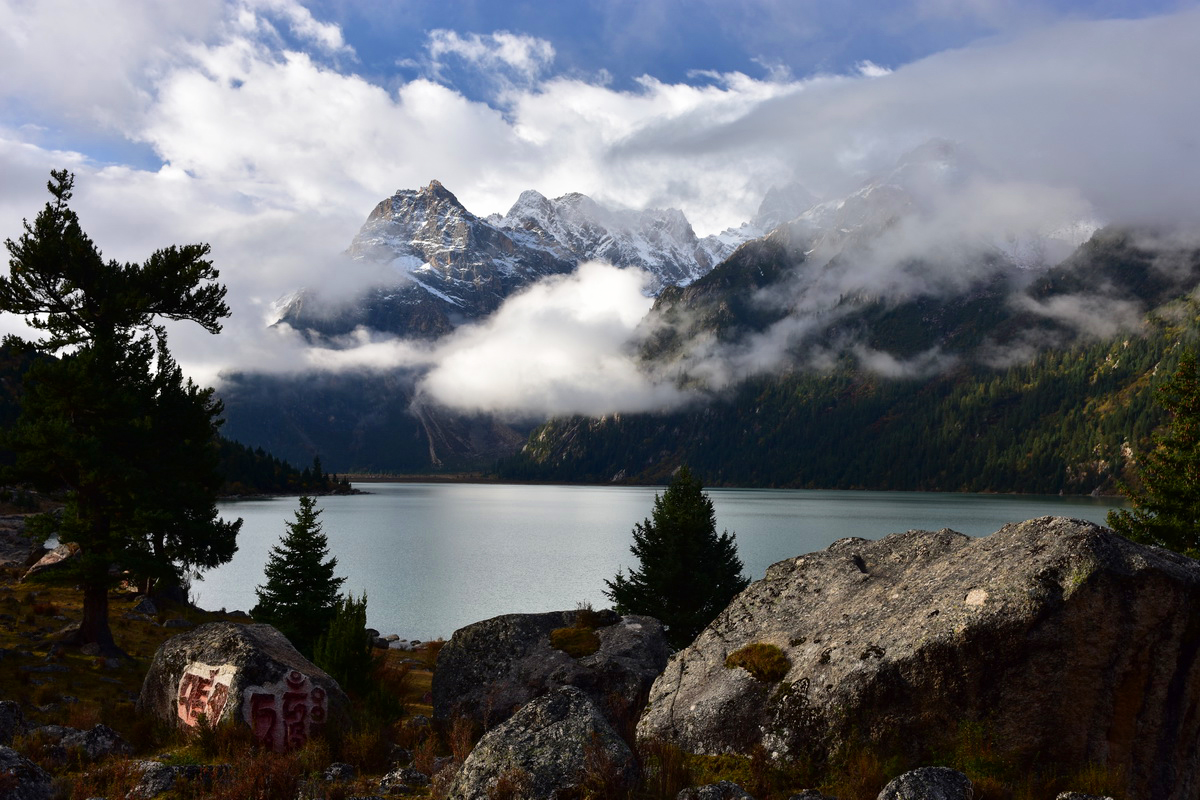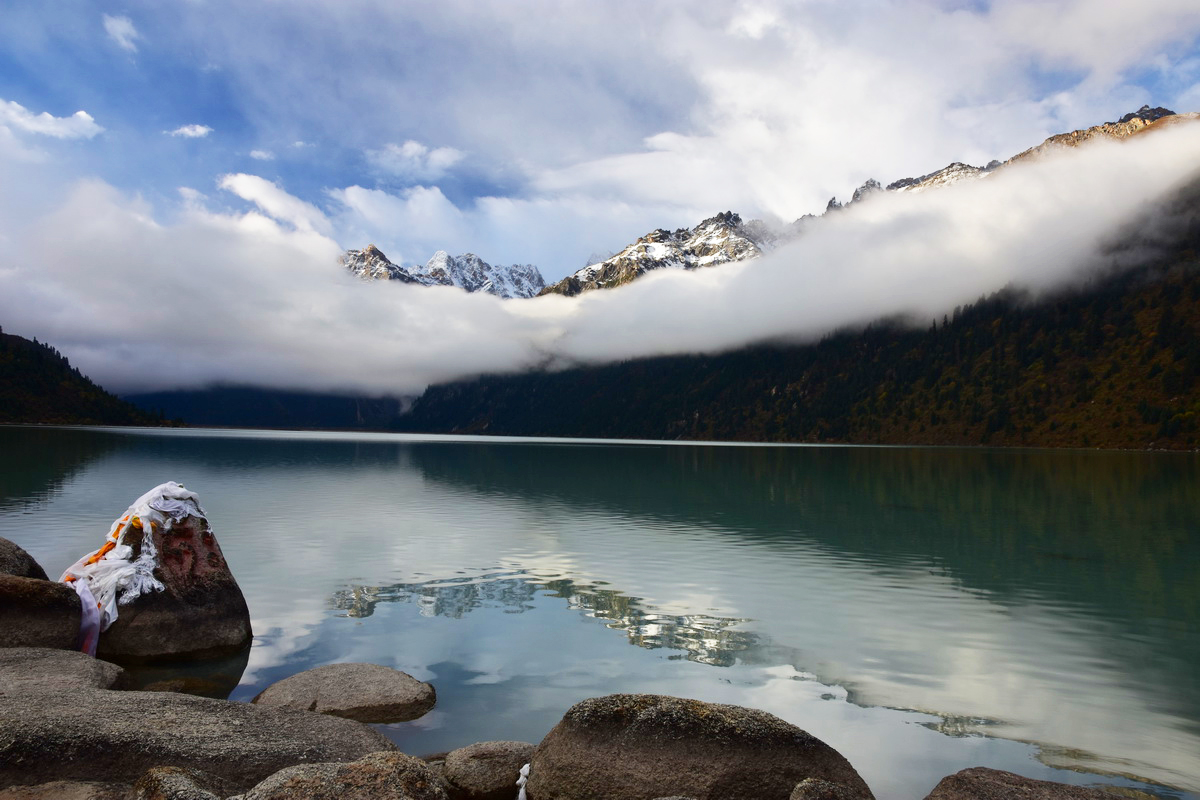
Resting at an altitude of a staggering 4,100 metres (13,500 ft.), Yihun Lhatso is a glacial alpine lake that shimmers like a sapphire embedded at the base of the surrounding snow-capped mountains. It can be found at the foot of Rongme Ngatra, which rises to a height of 6,168 metres (20,236 ft.) and is thus the tallest peak belonging to the Chola Mountains. Melted ice from the snowy cap of Rongme Ngatra makes its way down the steep mountainside until it eventually feeds into the lake, which is why the waters of the lake are breathtakingly pristine and crystal clear in appearance. If you are lucky, you may even spot herds of rare white-lipped deer grazing by its shore!
The lake received its name thanks to a rather sombre legend, which recounts the story of a Tibetan woman named Zhumu. Zhumu was the beloved concubine of a famous Tibetan folkloric figure named King Gesar, whose heroic deeds are the subject of The Epic of King Gesar. According to this legend, Zhumu decided to travel alone to the lake in order to contemplate its beauty, but she was so captivated by it that she couldn’t bring herself to leave. In the end, she was so drawn in that she began walking further and further into the lake, until she sunk beneath its azure waters. From then onward, the lake was known as Yihun Lhatso, which roughly translates to mean “the holy lake of the fallen heart” in reference to how Zhumu’s heart was taken in by its unparalleled beauty.
Alongside being a site of undeniably natural beauty, the lake is revered as a sacred place by the local Tibetan people. It is located within the Garzě Tibetan Autonomous Prefecture of Sichuan province, which once belonged to a region of the ancient Tibetan Empire known as Kham. The Tibetan people living in this region are culturally distinct from both the Tibetan people living in Tibet proper and those living in Qinghai province, so they are often referred to more specifically as Khampa Tibetans. For hundreds of years, these Khampa Tibetans have worshipped the lake as a holy place according to Tibetan Buddhism. Along the shore, you’ll find hundreds of boulders that have been carefully carved into what are known as mani stones.

Mani stones are any stone plates, rocks, or pebbles that have been inscribed with the six-syllabled Buddhist mantra known as “Om Mani Padme Hum.” They are often placed either on their own, in piles, or as part of walls and serve as a form of prayer or religious offering. As you wander along the shores of Yihun Lhatso, you will notice that many of boulders have been dredged from the lake or nearby streams and carved into mani stones, which blend seamlessly into the natural landscape and serve as a testament to this lake’s spiritual reputation. Alongside the carving of mani stones and the placing of multi-coloured prayer flags, many Tibetan monks and laypeople travel to the lake every year on religious pilgrimages. During these pilgrimages, they will take part in what’s known as a kora or pilgrimage circuit, where they walk around the entirety of the lake as a form of meditation and worship. Given the colossal size of natural sites like Yihun Lhatso, these pilgrimage circuits are huge undertakings and can take upwards of weeks or even months to complete!
Make your dream trip to the Huiyuan Monastery come true on our travel: